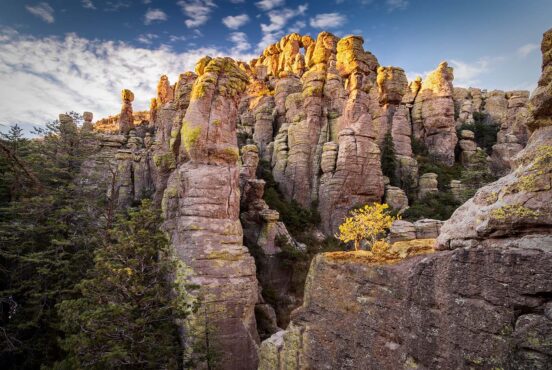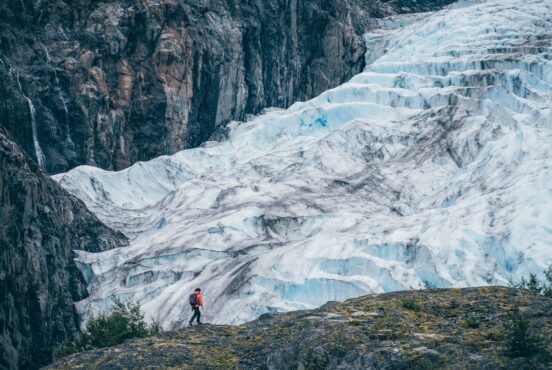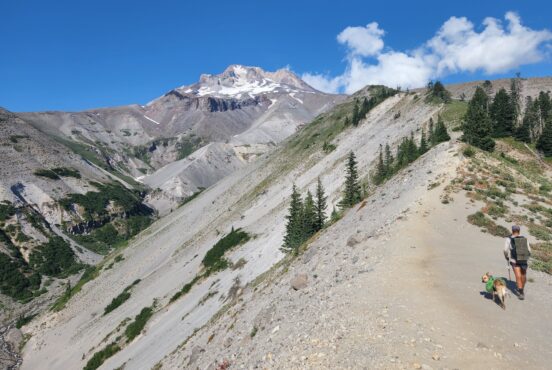It’s getting chilly outside but that doesn’t mean that outdoor fun ends. Learn to layer properly and you’ll be enjoying trail solitude while hiking all winter long.
Don’t hang up your daypack when the mercury dips—winter opens up a magical new world for hikers willing to bundle up a bit. Summer destinations look completely different when decked out in white, crowds all but disappear even on the most popular trails, and the winter wilderness offers up its own unique sound of silence. Plus, take a tip from me: hot chocolate never tastes better than when sipped from a thermos while soaking in the view.
Winter hiking does take a little more prep work since the right clothing can make or break your trip. And unlike in summer, when the wrong apparel is usually just an inconvenience, underdressing in the cold season puts you at risk of hypothermia. High-quality layers are the name of the game: They give you the flexibility to add or subtract warmth as conditions and your exertion change, and they help trap extra body heat. Whether you’re enjoying a snowy wonderland on the wintry trails of New Hampshire in the east or partying at Frozen Dead Guy Days in the west, here’s what you need to know about what to wear for a safe, comfortable winter hike.
Next-to-Skin: Baselayers

Winter warmth starts from the inside out. Your baselayers, or the items you wear next to your skin, play a critical role in cold-weather comfort. But that role is not keeping you warm. Instead, your baselayers’ main job is keeping you dry—because nothing saps body heat like wet, sweaty clothes.
You want a baselayer made of a wicking fabric that pulls sweat away from your skin and moves it to the outside to dissipate. That means merino wool, a synthetic material like polyester, or a combination of the two. Generally, wool naturally resists odors and stays warm when wet, but it can be expensive and is less durable than synthetics. Synthetics are tougher and more affordable, but can get stinky and are petroleum based (though many are made from recycled fabrics).
How to wear them: In milder winter weather, a baselayer top is probably all you need. In colder temps, I often add baselayer leggings under my shell pants.
In the Middle: Insulation and Midlayers
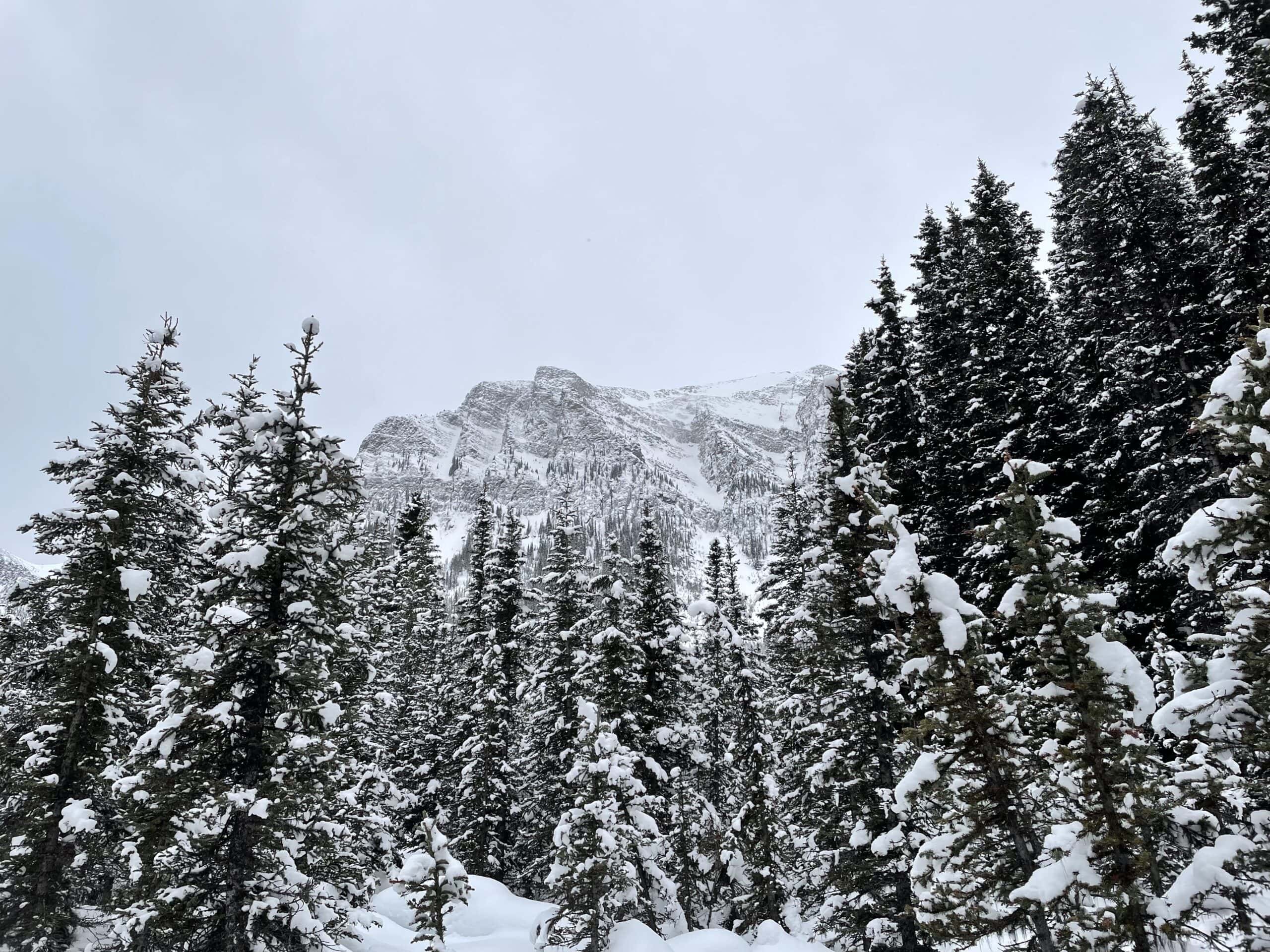
Here’s where the heat comes in: The layers you add on top of your baselayers and under your outerwear do the heavy lifting when it comes to warmth. Midlayers are typically light- to middleweight tops; they come in pullover, half-zip, or full-zip styles, and many have a hood. Like baselayers, you’ll often find these in wool, synthetic, and blends of the two fabrics.
Insulating layers are much warmer and stuffed with, well, insulation: down, synthetic fill, or, less often, wool. The insulation works by trapping your own body heat in tiny chambers within the fill. Insulating jackets and vests come in varying levels of warmth, from thin, light layers meant for warmer weather and/or very aerobic activity to huge parkas made for a polar expedition.
How to wear them: Let the weather and your activity be your guide. If it’s warmer outside and/or you’re hiking hard uphill, a midlayer or light puffy might be enough. If you’re moving more slowly or it’s frigid, add a heavier insulating jacket on top of your midlayer. The trick is not to get soaked in sweat (even the best wicking baselayer has its limits). Here’s a tip: Put on your puffy during breaks to prevent getting chilled.
On the Outside: Shells and Pants
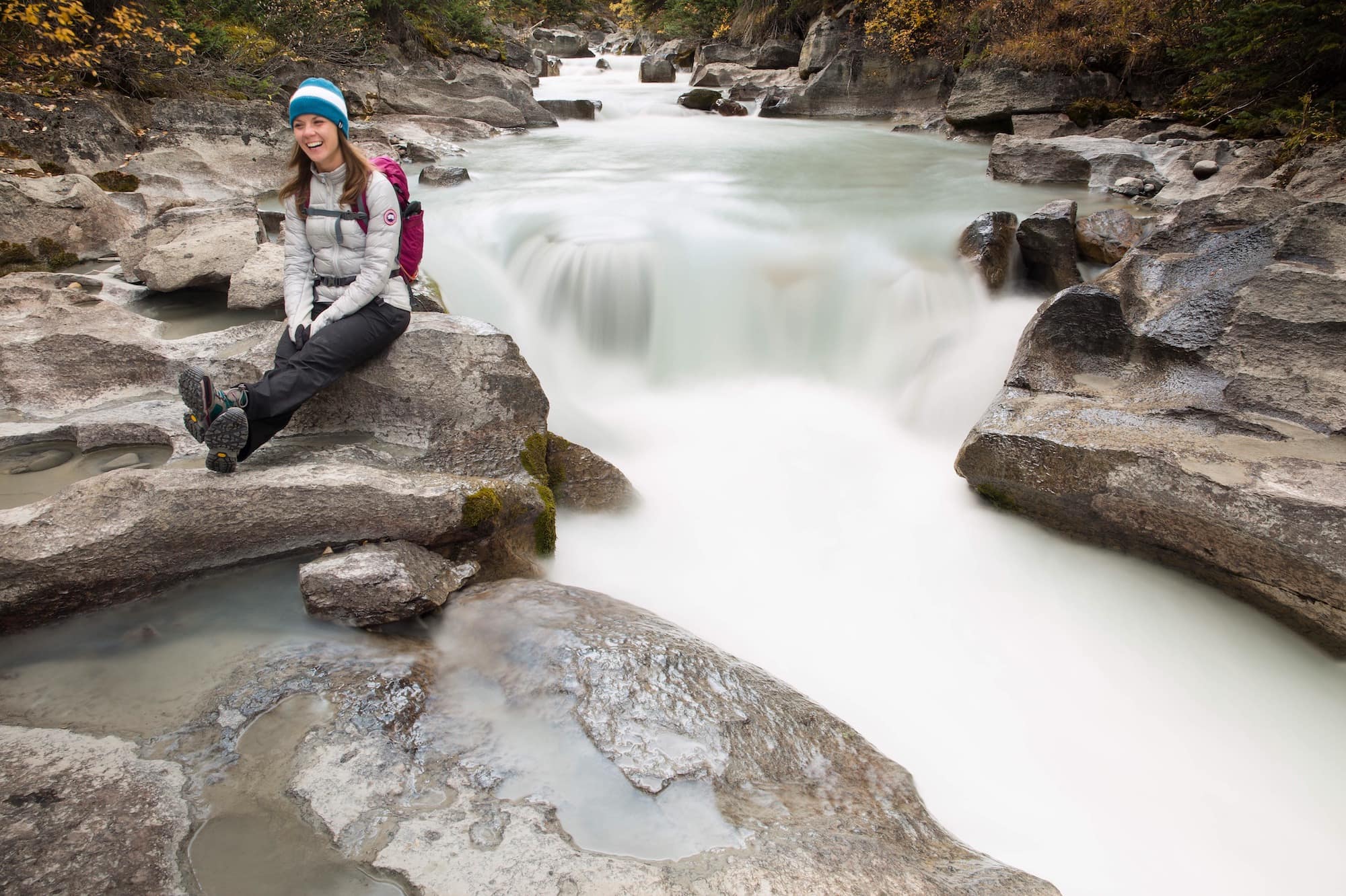
A shell is your defense against the elements. They’re either waterproof (called a hardshell) or water resistant (a softshell or windshell), and often come equipped with hoods and adjustable features to help keep out rain, snow, and wind. This protective layer extends to your bottom half, too, with shell pants. Choose between waterproof hardshell pants that slide over your base pair of pants, or softshell pants (which you typically wear on their own). If conditions allow, a regular pair of hiking pants can work just fine in the winter, too.
How to wear them: The best hardshells come in high-tech, breathable fabrics. They can still make you overheat, so we wear them only when we need the weather protection from rain or snow on exposed summits or ridgelines. Softshells are not totally waterproof, and therefore breathable enough to wear during your entire hike if you’re up for it. In milder weather, pants alone are fine. If it’s very cold, I wear baselayer pants under my shell pants.
On Your Feet: Shoes, Socks, and Traction

Ask yourself: Is there snow on the ground? That’s the big question to ask when choosing footwear for your hike. No? Then any old hiking shoes or boots are just fine. Yes, a bit? Look for high-cut, waterproof boots to keep your feet dry. Some hiking boots have a layer of insulation for colder days, too.
Yes, a lot—or ice? You’ll likely need some kind of traction device to maneuver safely through deep drifts and/or icy trails. Slip-on traction devices use coils or tiny spikes to grip the ground in slippery conditions, adding lots of stability. In deep snow, snowshoes are the way to go. As for socks, thicker styles made of merino wool or synthetic material will add warmth.
How to wear them: Slip or strap on traction devices only when you need them. Hiking on dry stretches can wear down your spikes, and snowshoes are clunky and tiring to wear if you don’t need the flotation. Strap snowshoes to the outside of your daypack when not in use. Best of all, there are tons of great hiking boots made in the USA.
Everything Else: Accessories

Don’t forget your hands and head. Up top, keep warm with a beanie. Lightweight, wicking ones are great for mild weather and strenuous trips, while thicker ones add extra warmth. Add a neck gaiter or scarf on colder days. Handwear runs the gamut from lightweight liner gloves to midweight, insulated gloves to huge, puffy mittens. Some feature waterproof outers for snowy days. Gloves give you more dexterity, but mittens are warmer.
How to wear them: Light gloves are all you need for milder weather and sweaty outings, or if you run hot (just keep in mind they’re likely not waterproof). Go for insulated waterproof mittens on very cold days. Choose lighter mittens or insulated gloves for anything in between. Double up: Wear liner gloves under thicker gloves or mittens for a boost of extra warmth.
Plan Your Next Big Hike
Get epic travel ideas delivered to your inbox with Weekend Wanderer, our newsletter inspiring thousands of readers every week.




